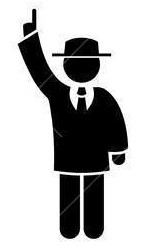Single-Wicket Laws - 1823
THE LAWS OF CRICKET
Revised by the Marylebone Club in the Year 1823
Printed by Carpenter and Son, Engravers and Printers, 16 Aldgate High=Street.
Broadsheet in Sloane=Stanley Collection.
Copy by RS Rait Kerr held at the MCC Library at Lord’s
When there shall be less than five players on a Side, Bounds shall be placed twenty-two yards each in a Line from the Off, and Leg Stump.
The Ball must be hit before the Bounds to entitle the Striker to a Run; which Run cannot be obtained unless he touch the Bowling Stump (or Crease in a line with it) with his Bat, or some Part of his Person; or go beyond them; returning to the Popping Crease as at double wicket according to the 22nd Law.
When the Striker shall hit the Ball, one of his Feet must be on the Ground, and behind the Popping Crease; otherwise the Umpire shall call “No Hit”.
When there shall be less than five Players on a Side neither Byes, nor Overthrows shall be allowed; nor shall the Striker be caught out behind the Wicket, nor stumped out.
The Field’s Man must return to Ball so that it shall cross the Play between the Wicket and the Bowling Stump, or between the Bowling Stump, and the Bounds; the Striker may run till the Ball shall be so returned.
After the Striker shall have made one Run, if he start again he must touch the Bowling Stump, and turn before the Ball shall cross the Play to entitle him to another.
The Striker shall be entitled to three Runs for lost Ball, and the same number for Ball stopped with Hat; with Reference to the 29th, and 34th Law at double wicket.
When there shall be more than four Players on a side there shall be no Bounds. All Hits, Byes, and Overthrows shall then be allowed.
The Bowler is subject to the same Laws as at double Wicket.
Not more than one Minute shall be allowed between each Ball.
